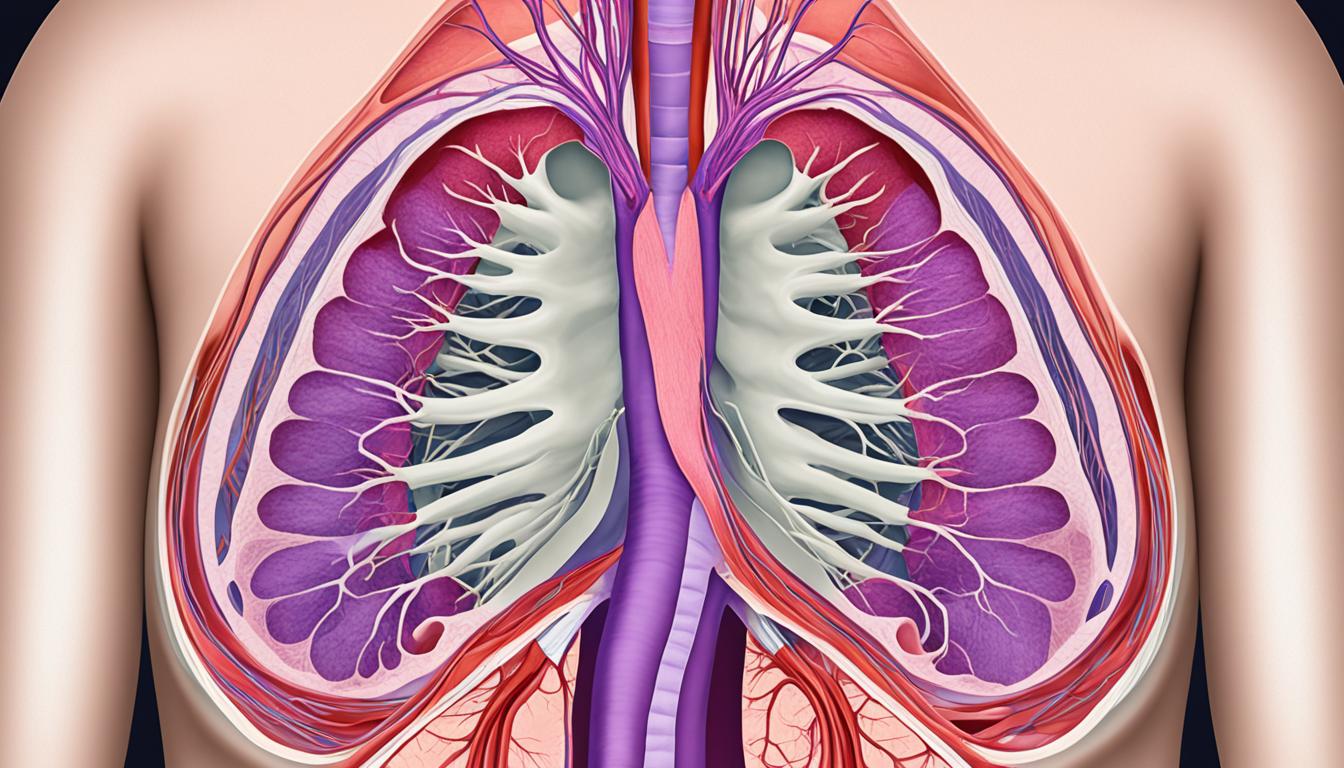Mammary duct ectasia affects the milk ducts below the nipple, leading to swelling. This is mostly seen in perimenopausal women between 40 to 50. It shows as a type of discharge from the nipple that can be dirty white, green, or black. Other symptoms include nipple and breast redness, a hard lump near the duct opening, and breast pain.
The causes of this condition are linked to getting older, smoking, and having inverted nipples. It’s crucial to know that this condition by itself doesn’t make breast cancer more likely.
To diagnose mammary duct ectasia, a doctor will do a breast check and might order ultrasounds or mammograms. These tests show if the milk ducts are swollen or thicker than they should be.
Treatment usually focuses on relieving symptoms. This may include using warm packs, special breast pads, or wearing a well-fitted bra. For those who smoke, quitting is suggested since it might help. If needed, surgery could be an option to remove the blocked duct.
Key Takeaways:
- Mammary duct ectasia leads to the milk ducts below the nipple getting swollen and thicker.
- It mostly affects women between 40 and 50 years old.
- The main signs are nipple discharge, soreness, and a lump near the duct.
- It might be linked to getting older, smoking, and having inverted nipples.
- A doctor can diagnose it through a physical exam, ultrasound, and mammogram.
Understanding Mammary Duct Ectasia: Symptoms and Causes
Mammary duct ectasia mostly affects women in their 40s and 50s. This condition comes with symptoms like nipple discharge and breast tenderness. You may also see redness, feel thickening near a duct, and find an inverted nipple.
Nipple discharge is the key sign. It can look dirty white, greenish, or blackish. This happens because of milk ducts becoming inflamed and swollen.
Breast tenderness is common, making it hurt to touch the breast. This often comes with redness, showing the breast is inflamed.
Sometimes, a duct can get clogged and lead to thickening. You might see a lump or feel swelling in your breast.
Having an inverted nipple means it turns inward instead of out. This happens when a duct is blocked and causes inflammation.
Women might also just feel a general breast discomfort. It can be a light feeling of fullness or sharp, ongoing pain.
The exact cause of mammary duct ectasia is uncertain. But, it’s thought that getting older, smoking, and having an inverted nipple might play a part. As women age, their milk ducts may widen, making inflammation more likely. Smoking can make ducts more inflamed. Women with an inverted nipple might have a higher risk.
Symptoms and Causes of Mammary Duct Ectasia
| Symptoms | Causes |
|---|---|
| Nipple discharge | Ageing, smoking, nipple inversion |
| Breast tenderness | Ageing, inflammation |
| Redness | Inflammation |
| Thickening near the clogged duct | Inflammation |
| Inverted nipple | Blockage, inflammation |
| Breast discomfort | Blockage, inflammation |
Diagnosis and Treatment of Mammary Duct Ectasia
To diagnose mammary duct ectasia, doctors do a breast check. They also use ultrasound and mammograms of the nipple and areola. These tests confirm swollen and thickened milk ducts, finding the cause of symptoms.
Treating mammary duct ectasia focuses on easing symptoms. Warm compresses can relieve breast pain and reduce swelling. Breast pads soak up nipple discharge, keeping you comfortable and your clothes clean.
It’s important to wear a supportive bra that fits well. This helps reduce breast discomfort and supports the affected area. Sleeping on the opposite side can also help prevent extra swelling and pain.
Stopping smoking is a key step to managing mammary duct ectasia. Smoking can make the condition worse. Quitting smoking can lessen symptoms and boost breast health.
If symptoms don’t improve, surgery might be needed to remove the affected duct. This surgery can offer lasting pain relief and enhance life quality.
Mammary duct ectasia isn’t linked to breast cancer risk. Yet, having regular breast checks and mammograms is still crucial. These checks help ensure breast health over time.

